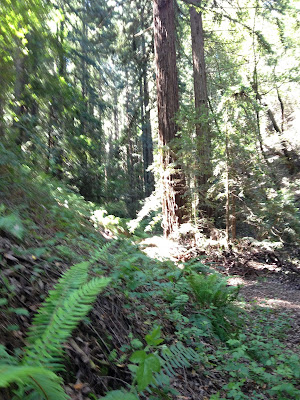Elephant Seals: Pupping, Breeding and Violence on the Beach
 |
Elephant Seals are born in winter on beach colonies and by the time they're weaned at one month have quadrupled their size. Mothers leave the young, after one month, to learn to swim and feed on their own. (Image by Jerry Kirkhart/Wikimedia)
|
Trekking through sand dunes on a beautiful Northern California day last weekend, we rounded a bend and came to a group of huge elephant seals scattered like fallen logs around us. This was Bob's (my husband) birthday wish, to visit the Año Nuevo State Park's Northern Elephant Seal colony. Our docent guide had cautioned us to stick close to her on our walk out to the dunes. You can never be sure where these outlying animals will turn up. These, she told us, were the "losers," the male elephant seals that were too young to gather a harem and mate, or even hang around the fringes of the harem. We were still about 1/2 mile from the beach where the harems covered swaths of sand.
The young males around us were about 10 feet long and probably weighed in at around 3,000 pounds -- the weight of a Toyota Prius. At maturity, these males will grow to a full 13 feet long with 4,500 pounds of fighting, mating mass -- the weight of a Dodge Durango truck. They can all move pretty fast for only undulating along the ground and not using their arms or hind legs -- they only have flippers, after all! Females in the harems are smaller, only 10 feet long and 1,500 pounds at their largest. Some of the young males around us lounged in puddles. One of them blew bubbles with his elephant trunk-like snout for which they're named. The snout, or proboscis, on males grow for the nine-year average lifespan and our guide could tell us the approximate age of the males around us by the size of their snout. Most of them were less than six years old.
Northern Elephant Seals once teetered on the brink of extinction. In the late 1800s, after whales became scarce due to hunting (their blubber was used for whale oil), whalers turned to Elephant Seals which also had blubbery fat reserves. By 1910 only about 100 animals remained in rookeries off the coast of Baja California. With protection of these rookeries, Elephant Seal populations have rebounded and are now near their estimated pre-hunting numbers, one of the "Conservation Success Stories" along with Peregrine Falcons, Gray Whales and Humpback Whales, and a few others. That made our visit even more special knowing they might not exist today except that humans cared to protect them.
These are deep ocean creatures that spend half of their lives in the frigid, twilight world 5,700 feet below the surface, migrating from their breeding colonies to northern waters toward Alaska (for the males) or further west toward Hawaii (females). They primarily hunt squid and can hold their breath for two hours. They also are able to come ashore and fast and not drink water for up to two to four months while they pup, nurse their young, and the males fight for dominance, mate and protect their harem from invading rival males. Alpha males can have up to 50 females in their harem and father 90% of the young in their harem. This so exhausts them, though, that scientists think Alpha males die after their one year of glory as "Harem Master," giving them only a nine-year life expectancy (up to 12 years in some cases). Females, on the other hand, live about 20 years and have one pup per year after they reach adulthood at about 4 years of age.
They come to land only twice a year -- once in the winter to give birth and mate, and then a second time in late spring, but separately, males, females, and pups return to the colony site to molt. This is a catastrophic molt in with they lose not only their fur, but also their skin underneath. It takes a few weeks to complete the molt, then it's back to sea.
Bob and I enjoyed this special encounter with the Elephant Seals; if you'd like to see this grand show, the spots closest to the Bay Area are Año Nuevo State Beach, Point Reyes National Seashore near the lighthouse, and further south at the beach below Hearst Castle. The Año Nuevo park has a wonderful visitor center with lots of information about the Elephant Seals and other wildlife. They also provide tours, the only way to get out and view the colony. You can make reservations online or take your chances with a drop-in visit (mid-week afternoons are likely the best chance of getting in on a tour between now and March).
More information:
Año Nuevo State Park guided tours of the Elephant Seal Rookery: https://www.parks.ca.gov/?page_id=27613
Information about Northern Elephant Seals and a local wildlife rehabilitation facility that does great work for them and other marine mammals: http://www.marinemammalcenter.org/education/marine-mammal-information/pinnipeds/northern-elephant-seal/
14 Huge Facts About Elephant Seals with some fascinating quick facts: http://mentalfloss.com/article/73596/14-huge-facts-about-elephant-seals


Sounds like a wonderful way to celebrate a birthday! Thanks for sharing the great video and wealth of information.
ReplyDelete